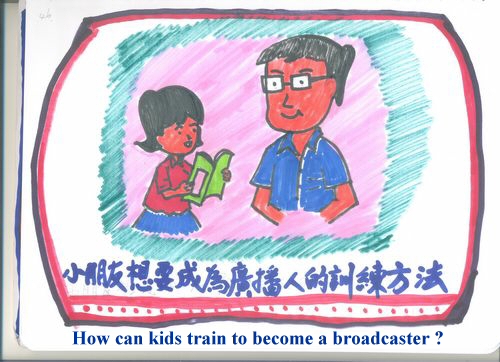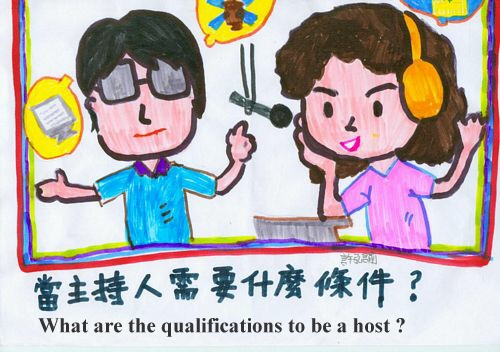|
Broadcasting Hosts
The introduction to qualifications and training for broadcasters
|
What are the qualifications
to be a broadcaster?
|
|
It depends on the aspect of broadcasting you’re
interested.
To be a host,
you must: 1) think fast and be creative; 2) speak clearly; 3) know the interest
and needs of your audience; 4) have a distinctive style.
To be a
newscaster, you must: 1) think fast and know the focus of news events; 2) speak
clearly and be succinct to news report; 3) care about current events
domestically and abroad; 4) develop professional knowledge for the category you
cover such as politics, sports, economy, arts and culture, and transportation.
|
|

|
|
How can kids train to
become a broadcaster?
|
|
The very first step is to practice enunciation.
It’s
not that difficult in training. To practice, find an article and read it out
aloud; make sure to speak every single word loudly clearly and smoothly and
then ask your teacher to help correct your mistakes. Because radio broadcasting
is about communicating with sound, you must “speak” everything. Therefore, you
must cultivate “courage” and “ability to express yourself clearly” from a young
age. It’s even better if you read a lot of books and are curious about a lot of
things because having a lot of common knowledge is one of the fundamental
qualifications for a broadcaster.
|
|

|
|
What are the qualifications
to be a host?
|
|
The most basic
qualifications for a host are the ability to enunciate clearly, thinking fast,
being creative, having a distinctive voice, reacts fast, and articulate. The
difference between categories of programs such as music, interviews, service
and others require professional knowledge in music as well as a degree of
sophistication, which makes the program more interesting and listenable.
|
|

|

Source of materials and photos : Li, C.R. (2006), Little Broadcasting World, 1st edition, Taipei: Broadcasting Industry Association of R.O.C., pp. 21-30.
 

|

